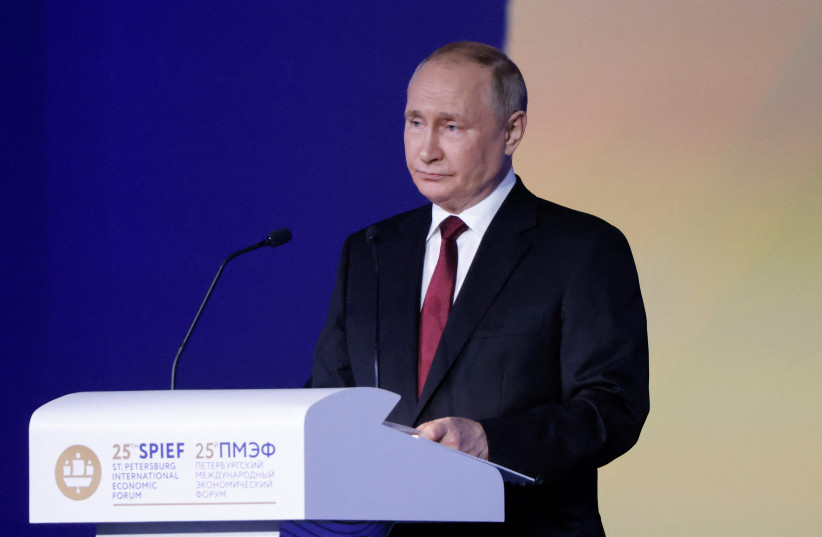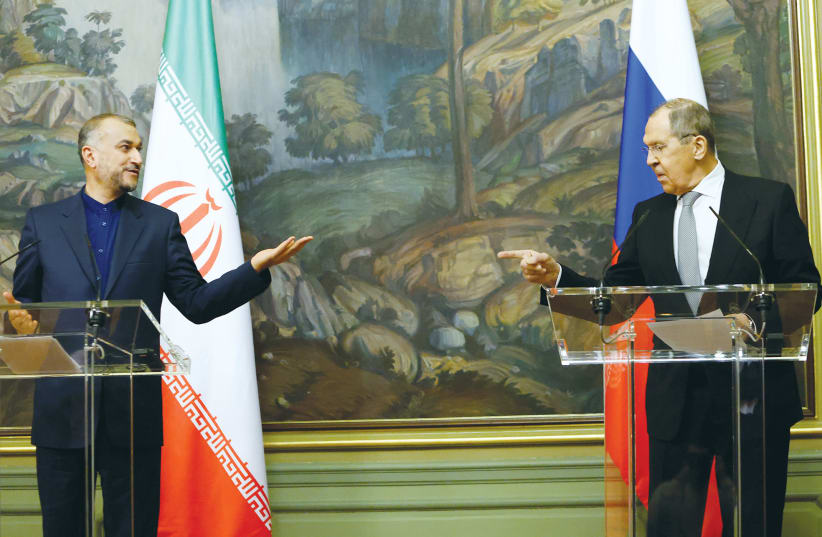Throughout modern history, Iran has always followed in the footsteps of its powerful neighbor, Russia, in adopting almost identical approaches to politics. So it’s not unreasonable to assume that we can glimpse an image of Iran’s tomorrow in the mirror of Russia’s today.
Persia – known as Iran since the mid-20th century – and Russia are ancient nations with rigid social structures and strong authoritarian traditions of rule, which Wittfogel once famously called Oriental Despotism. Both maintained their medieval authoritarianism as late as the early twentieth century. Neither had a Renaissance or an Enlightenment like Western Europe.
Both absorbed Western industry and technology while defying the democratic political developments that came with them. Russia began this process in the age of Peter the Great in the early eighteenth century and Persia in the era of Naser al-Din Shah in the second half of the nineteenth century.
At the start of the twentieth century, the intelligentsia and people of both nations staged quasi-liberal, secular revolutions against authoritarian regimes that based their claim to political authority predominantly in religion: Shiite Islam for the Qajar Monarchy and Orthodox Christianity for the Romanov Empire.
The pseudo-democratic governments that these revolutions produced and their corollary liberal achievements, however, would not last long. In Persia, the celebrated constitutional system was dismantled within two decades, with the rise of the absolutist Pahlavi monarchy. In Russia, the Bolsheviks toppled Kerensky’s Social Democratic Republic in just a few months.

Both countries then went through violent anti-western ideological revolutions that led to the establishment of totalitarian and expansionist regimes. In Russia, given the nation’s superpower status and proximity to European centers of thought, the communist transformation occurred comparatively early in the first half of the twentieth century. Iran, due to its marginal status, as well as heavy American influence over the nation for most of the Cold War, experienced the Islamist transformation only in the late twentieth century.
After more than seven decades of communism, a frustrated and penitent Russia reverted back to neo-Tzarist nationalism. The United States and the rest of the West were complacently basking in the fact that they had defeated the Soviet Union, brought the Cold War to an end and in the words of Francis Fukuyama, instigated the “end of history” that would supposedly usher in an era of universal liberalism. A contingent of the former communist regime’s security-military apparatus succeeded in re-organizing themselves as a nationalist movement with purely patriotic intentions that ostensibly had no hostility to the West.
However, within the span of two decades, with the full establishment of this nationalist movement under the leadership of Vladimir Putin, the Russian enmity with the West and its security and military offensive against the democratic world grew even deeper, larger and more dangerous than during the communist era.
Russian nationalism vs Iranian society
It wouldn’t be amiss to say that Russian nationalism today is tantamount to fascism. Rooted in an increasingly retrograde reading of Orthodox Christianity, contemporary Russian nationalism is a forcefully homogenizing phenomenon that is fundamentally incompatible with democracy, and actively curtails many modern human and civil rights, including the rights of ethnic, religious and sexual minorities.
At the same time, Putin’s apparatus is intensely outward-looking. It is a revanchist and imperialist military-industrial complex that intends to return the historical territories of the Tzarist Empire to Russia by means of coercion, propaganda and conquest. The champions of Putin’s regime are not the isolationist Lenin or Stalin, but the great conquerors of yore, Peter the Great and Potemkin.
On the other hand, although Iranian society is still grappling with the Islamic Republic, its frustration with religious ideology and its nostalgia for a mostly imaginary glorious and prosperous past have prepared it for a treacherous transition to an almost similar sort of extremist nationalism that Russia is experiencing today.
Now that the Islamists have ostensible ascendancy, it is hard for many to imagine such a scenario. But for the past decade, the regime has been increasingly facing fundamental crises that, in most likelihood, it won’t be able to withstand in the long run.
A significant manifestation of this phenomenon is the continuous popular demonstrations against the regime, in recent years. This, in addition to a possible decline in the fortunes of its international backers, will eventually force the Islamist regime to consider a metamorphosis, not unlike the one that the former Soviet communist system had to undergo to partly survive.
Based on evidence, the said metamorphosis is supposed to unfold in such a way that the regime’s security-military core will discard some of the more untenable aspects of the regime, surgically remove some of the insiders and co-opt part of the opposition.
It will then try to disguise the current Islamist authoritarianism and imperialism in the garb of patriotism to legitimize them in the eyes of the weary populace. Islamist expansionism will then turn into the irredentism of nationalists who long for the revival of the ancient Persian Empire.
These nationalists already demonstrate intense chauvinism and antisemitism similar to the Islamist regime, and most likely will try to maintain the current regime’s aggressive attitude towards the region by holding on to nuclear power, missile technology and the proxy networks of influence that the Islamic Republic has created.
They show no respect for ethnic and religious divers diversity of the country, either. For all intents and purposes, a politically charged Shiism, this time as the consolidating element of Iranian nationalism, will remain the building block of the new regime.
The truth is that the Islamic Republic has long been able to bring in line a considerable portion of its opposition that has much in common with the regime in terms of anti-democratic approaches to politics. Instead of human rights and democracy, the prevailing attitude among these, which is patently on display in most Persian-language media overseas, is an attitude of indulging in the manifestations of authoritarian nationalism, from ancient Achaemenids to contemporary Pahlavis.
The endless stream of content on well-followed Farsi television networks about the glory days of imperial rule disturbingly relay and repeat the favorite keywords of the Revolutionary Guards, namely authority and security. For a nation that already suffers from an obvious excess of authority, it is rather odd that the majority of the ideas the opposition advertises to the Iranian society is authoritarian in nature. This can’t be coincidental and most likely has something to do with the regime’s gambit to channel people’s grievances towards a specific future.
Given this layout, if nothing out of the ordinary happens and if the current nationalist narrative is allowed to run its full course, it is likely that, unlike post-World War II Germany and Japan that were democratized through US intervention, and similar to post-Soviet Russia wherein the US opted not to intervene, Iran’s next metamorphosis will produce a fascist regime.
This, of course, is highly contingent on the dynamics of the international stage. For instance, if Russia’s increasingly belligerent stance towards the West, which is also likely to draw in China, eventually sparks a fresh world war or at least provokes more intense and widespread regional conflicts around the world and particularly in the Middle East, this can fundamentally affect the fates of the current and the coming regimes in Iran.
Whichever direction the course of events takes, we need to keep in mind that the most essential issue that has plagued Iran in modern times, which in turn has troubled the region and the wider world, is not any shortage of authority, but a complete lack of democracy. When the next moment of change comes for the beleaguered country, democracy should be given a chance.
The writer (@DrParchizadeh) is a political theorist, security analyst and cultural expert. He is a senior editor at Al Arabiya Farsi, serves on the editorial board of Journal for Interdisciplinary Middle Eastern Studies and is an international committee correspondent for World Shakespeare Bibliography.
